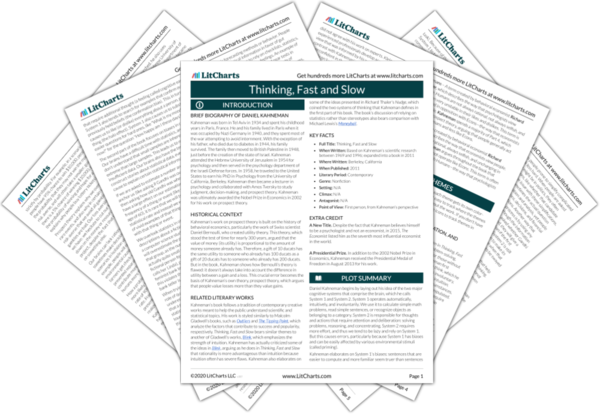This example illustrates one of the major findings of prospect theory, and a large theme in Kahneman’s book. We dislike losses more than gains. Thus, in this example, Anthony will give up the risk in order to certify a gain. Betty, on the other hand, wants to avoid the sure loss. As Kahneman points out, Bernoulli’s theory would make their choices the same, but their reference points are crucial in understanding the decisions they make. For Betty, it is more important to her to maintain her wealth.
